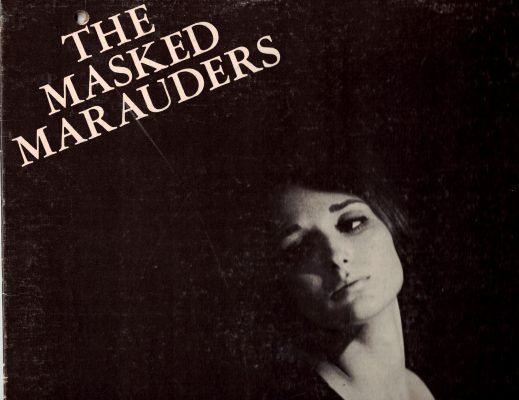1969 -- DON'T BELIEVE EVERYTHING YOU HEAR. . .
AMERICA, SUMMER 1969 — As in Hamlet’s era — and our own — “the time is out of joint.”
Divided over Vietnam, one half of America reviles the other half. When President Nixon praises his “silent majority,” the divide deepens. Meanwhile, crazy things are happening.
A man defaces ten paintings at the Met. Oil spills onto the California coast. In Cleveland, a river catches fire. The Manson cult kills and kills. When men land on the moon, it seems the most believable event of the summer. Summing up the schizophrenic end of the 60s, Joan Didion writes, “So many encounters in those years were devoid of any logic save that of the dreamwork.”
When the time is out of joint, reality struggles to keep up. The growing gap between probable and improbable fills with fear and lies. But in 1969, America met mayhem with humor and hoax.
Mike McGrady had read enough trash. After slogging through the steamy best-seller Valley of the Dolls, “which I couldn’t put down because I was asleep,” the veteran reporter decided to have a little fun. One morning, McGrady circulated a memo in his Newsday office.
“As one of Newsday’s truly outstanding literary talents, you are hereby officially invited to become the co-author of a best-selling novel. There will be an unremitting emphasis on sex. Also, true excellence in writing will be quickly blue-penciled into oblivion.”
Following McGrady’s guidelines, twenty-five reporters submitted chapters, each starring a Long Island couple, the Blakes. When William cheats on Gillian, she gets even with a series of sexual escapades. Gillian sleeps with a mobster, a rabbi, a hippie, and several accountants. Scenes include sex in a tollbooth, with ice cubes, a Shetland pony. . .
Back at his desk, a chuckling McGrady edited chapters. Rejecting any that were “too well-written,” he revelled in the worst, the silliest, the ones sure to sell.
— “Faster and faster they communicated. Fingers on skin, teeth on skin, then great shudders of total communication, and explosions of understanding. Afterward, Morton said, ‘I’d forgotten there was more to life than mowing a lawn.’ ”
In January 1969, behind a lurid cover, Naked Came the Stranger hit the bookstores. On the back cover was “author” Penelope Ashe, a lonely Long Island housewife rumored to harbor burning secrets.
“Ashe” was actually McGrady’s sister-in-law, ready to speak to the press if the book sold. And it sold. By that wackdoodle summer of ‘69, Naked Came the Stranger was on the New York Times best-seller list. It was time to ‘fess up.
In mid-August, a full studio audience at “The David Frost Show” waited to meet the lurid, live Penelope Ashe. When Frost introduced the author, a long line of buttoned-down reporters strolled out and the hoax came to light. They had fooled us. Shouldn’t we think about what garbage we were reading? Not so fast. That fall, with readers in on the joke, Naked Came the Stranger sold another 40,000 copies.
Hoaxes are not lies but inside jokes. Liars and Big Liars aim to deceive us, to short-circuit our critical thinking, to win our allegiance by discrediting everyone else. But hoaxers do the opposite. Hoaxers make us ask — what are we becoming? Let’s laugh a little and think about it.
In mid-October, as San Francisco’s Zodiac Killer claimed another victim, as the New York Mets won the World Series, Rolling Stone ran a curious record review.
Seems a “super-session” of rock’s biggest stars recently “met with impeccable secrecy in a small town near the site of the original Hudson Bay Colony in Canada.” The session included Mick Jagger, Bob Dylan, three Beatles — John, George, and Paul — and “a drummer as yet unnamed.” The resulting album, “The Masked Marauders,” included Mick and Paul singing a capella, Dylan belting out “Duke of Earl,” and Jagger crooning “Can’t Get No Nookie.” Among the other “string of masterpieces” were “Cow Pie” and "I Am The Japanese Sandman (Rang Tang Ding Dong)."
"Paul showcases his favorite song, ‘Mammy,’” the review noted, “and while his performance is virtually indistinguishable from Eddie Fisher’s version, it is still very powerful, evocative, and indeed, stunning. And they say a white boy can’t sing the blues!”
In conclusion, wrote Rolling Stone, "It can truly be said that this album is more than a way of life; it is life.”
There was no such band, no such album. But when Rolling Stone readers wrote asking where they could buy “The Masked Marauders,” hoaxer Griel Marcus took the trick to a new level. Marcus hired a Berkeley band to record three songs. The singles were aired on FM in L.A. and San Francisco. Listen.
Warner Brothers bought the hoax, paid an advance, and “The Masked Marauders” album came out that November. Marcus wrote the liner notes: “In a world of sham, the Masked Marauders, bless their hearts, are the genuine article."
The truth was finally revealed by the San Francisco Chronicle, which called the hoax a “delightful bit of instant mythology.” And as the album charted on Billboard, another carefully-crafted rumor was spread by college newspapers. Paul McCartney was dead!
In our own disjointed time, when lies and conspiracies abound, when inconvenient truths are labeled “Hoax!” we can respond predictably. With shock and disgust. Incredulity and despair. But 1969 suggests another strategy for coping with BS. Make fun of it. Make your own. Then step forward, come clean, and show the gullible that they don’t have to believe everything they hear. That if it’s too good to be true, it probably isn’t true. And that it’s time to start thinking again.











